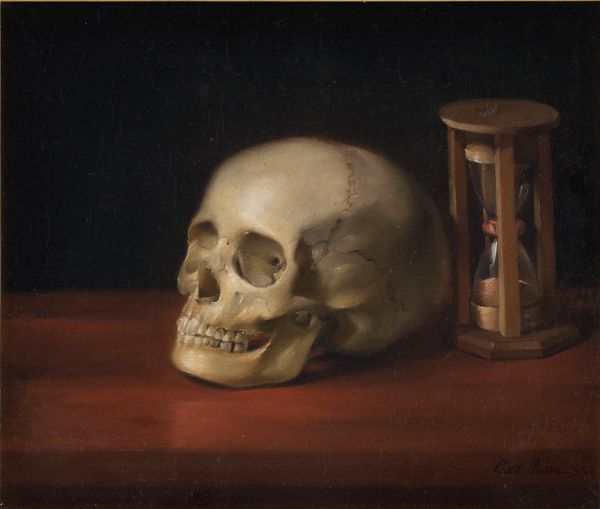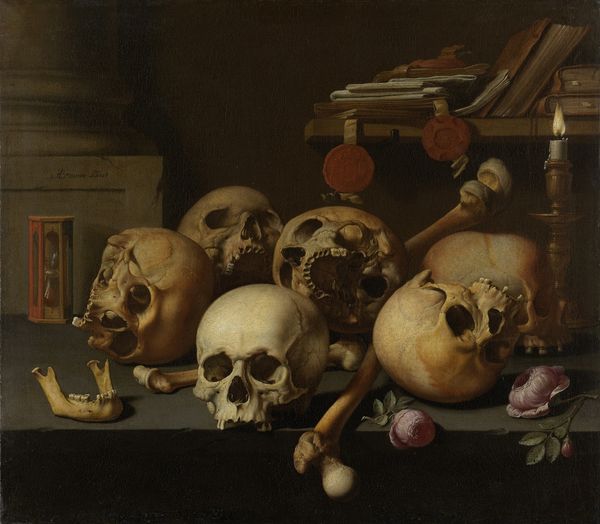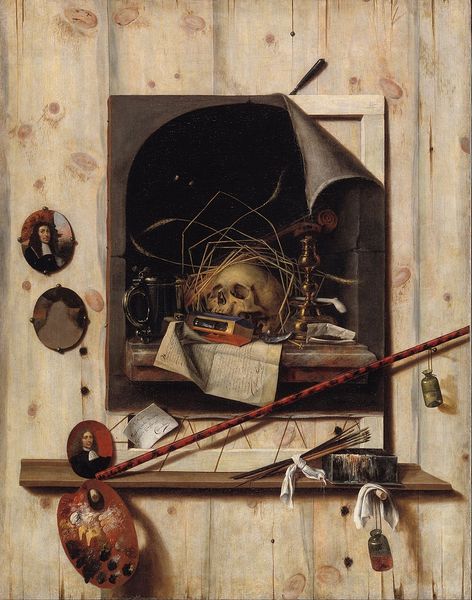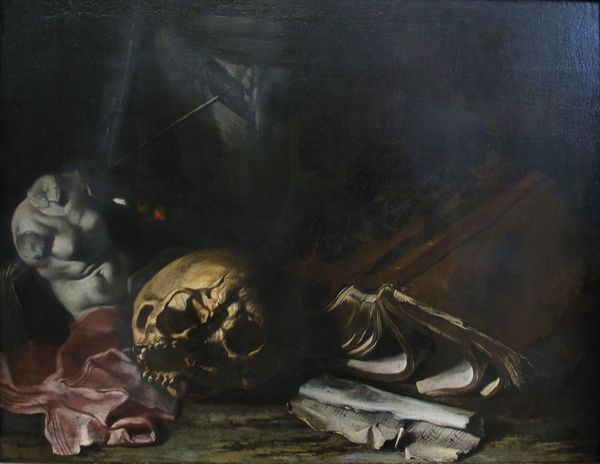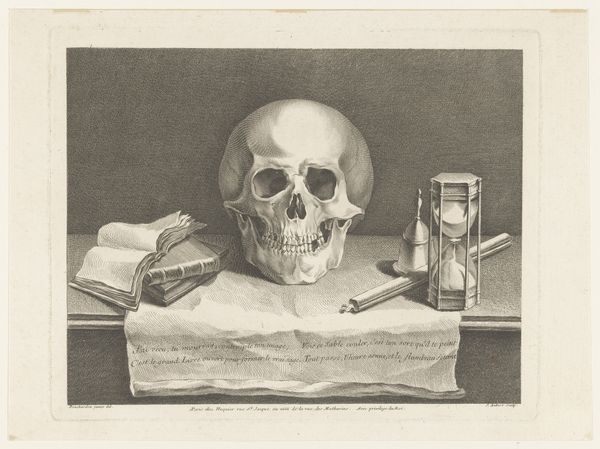
painting, oil-paint, oil
#
baroque
#
painting
#
oil-paint
#
oil
#
mannerism
#
figuration
#
oil painting
#
vanitas
#
underpainting
#
painting painterly
#
14_17th-century
#
trompe-l'oeil
Dimensions: 27.4 x 40.5 cm
Copyright: Public Domain
Curator: Take a moment to regard this painting: an anonymous work from around 1620 known as "Vanitas Still Life with Skull, Wax Taper and Portable Sundial" here in the Städel Museum. Editor: It strikes me immediately with its stark contrasts—the pallid skull against the deep darkness, the vibrant red of what looks like a ball of yarn juxtaposed against that precise, miniature sundial. The very materials seem to speak volumes, even before we get to symbolic weight. Curator: Ah, precisely! Let's delve into that weight. Vanitas paintings, popular in the 17th century, are essentially meditations on the ephemerality of life and the futility of earthly pleasures. The skull, of course, is a universal memento mori, a reminder of our mortality. Note the dried wheat interwoven, which could imply renewal after death but it does very little to distract from the skull staring back at the viewer. Editor: And the craftsmanship… the illusion of reality in the folds of what appears to be a crimson skein. I'm curious about the source and preparation of the oil paint here. How much labor was involved in rendering such tangible surfaces and simulating this tactile reality? I'd even consider whether the red hue of the textile here uses any of the techniques or materials from dyeing processes available at the time. Curator: Intriguing. The burning candle also plays a crucial role in its visual symbolism: life’s flame burns quickly. I think the viewer also notices the contrast with the sundial right away – representing the measurement of fleeting time… Do you sense a visual or compositional hierarchy among those elements, to create emphasis? Editor: I would be curious to find out the value that contemporaries gave to the portable sundial and what significance the material held at that time. It seems to me a display of progress, utility and perhaps prestige in a pocket-sized instrument, so in a painting about vanity, this choice would imply what type of "riches" one may find attractive or enviable, especially as it relates to time management. Curator: True; it does complicate the interpretation slightly. It’s less about straightforward moralizing and more about acknowledging the complexities and ambiguities of human experience and how the fleeting experience of "usefulness" doesn't avoid mortality. Editor: Absolutely. For me, understanding the context in which this was made and viewed – the workshops, the market for pigments, the daily lives and mortality anxieties of patrons—deepens its resonance far beyond the typical "vanitas" label. And what better encapsulates these fleeting experiences than a sundial? Curator: A fascinating way to see it! Editor: Yes indeed, so much more than a stark allegory – more like a complex dance with the material world and the ideas of the age.
Comments
No comments
Be the first to comment and join the conversation on the ultimate creative platform.
